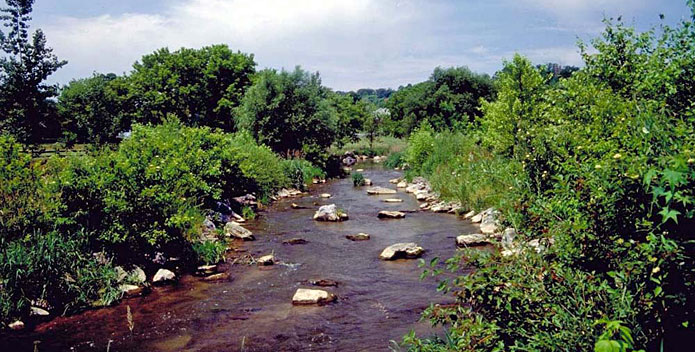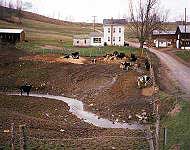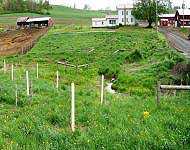CBF's efforts in the Pennsylvania portion of the Susquehanna watershed are focused on helping communities and farmers improve water quality by starting locally. Whether it's working with farmers to implement better farm practices, or with local watershed associations and other groups to plant trees along streams—we work one-on-one with people to make change happen. Our staff of restoration specialists provide one-on-one technical assistance in the implementation of agricultural Best Management Practices (BMPs) that improve farm sustainability and significantly reduce nitrogen, phosphorus, and sediment pollution to local waterways.
CBF's approach to restoration integrates multiple programs, funding sources, and BMPs into a whole-farm approach. Our creative and cost-effective methods improve water quality, and solve on-farm production, management, and waste problems.
Our restoration team recognizes the need to balance economic viability with environmental sustainability, and that each farm and situation is unique. Working with farmers and partners like the USDA's Natural Resource Conservation Service, Farm Service Agency, county conservation districts, and private consultants, our team provides the right technical knowledge and assistance to addresses natural resource concerns while improving farm management.
The end result is cleaner waters and more profitable, sustainable, and environmentally responsible farms.
Public and private funds are strategically utilized to restore watersheds in areas with high concentrations of polluted runoff from agricultural activities. Some of the BMPs include: conservation and nutrient management plans, forested riparian buffers, streambank fencing, barnyard improvements, and field practices such as rotational grazing and no-till. Many of these practices result in reduced soil erosion, improved soil health, and healthier streams.
Since 1997, CBF has directly invested more than $25 million in helping over 5,000 Pennsylvania landowners, primarily farmers, to implement conservation measures. CBF funds have leveraged well over $100 million in additional funds and modeled effective conservation strategies. Seven field staffers provide technical assistance on forested buffer installation through USDA's Conservation Reserve Enhancement Program (CREP). Since 2001, CREP forested buffers have leveraged roughly $95 million in state and federal funds and aided over 4500 PA landowners (available to non-farmers & farmers).





